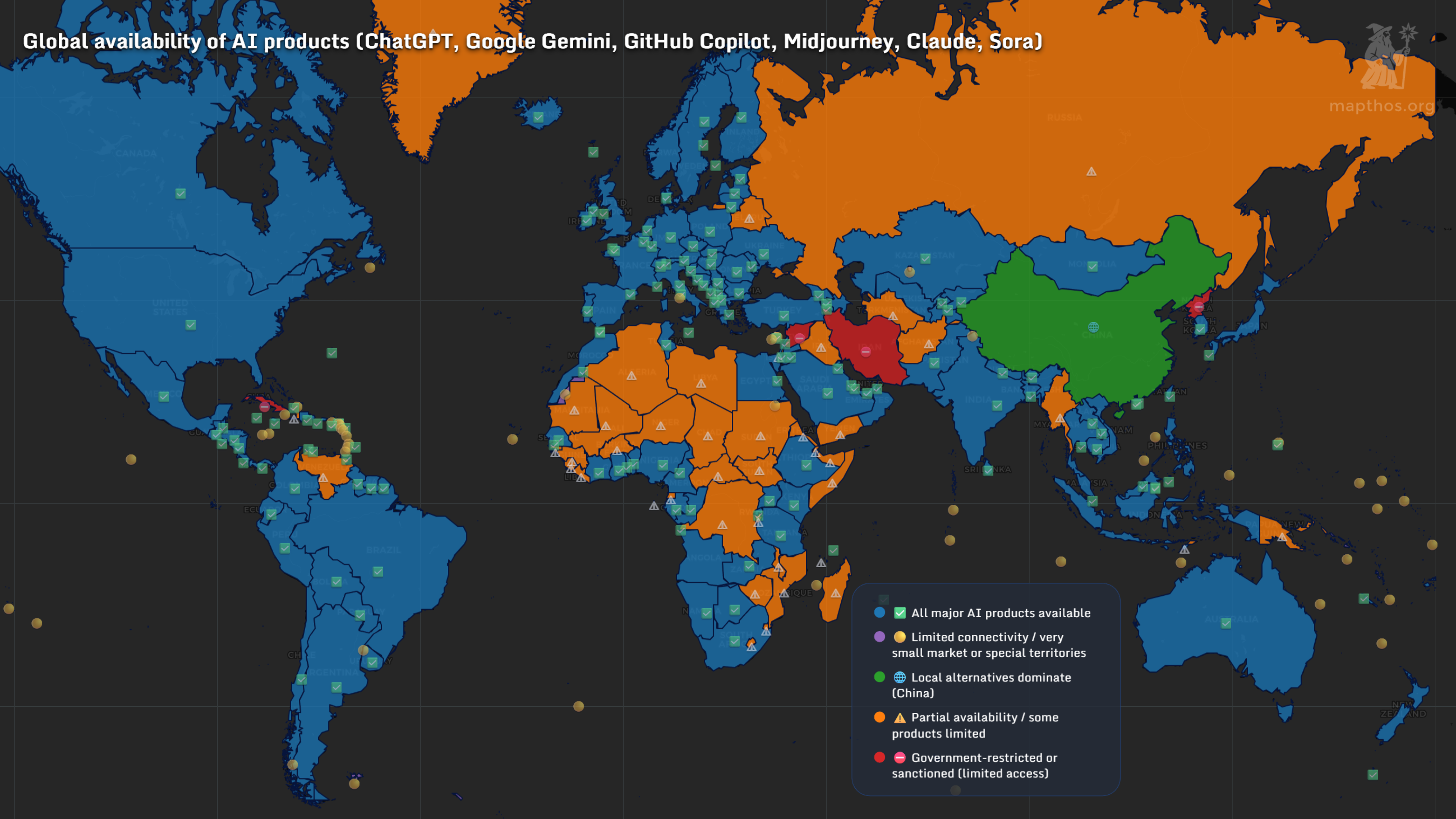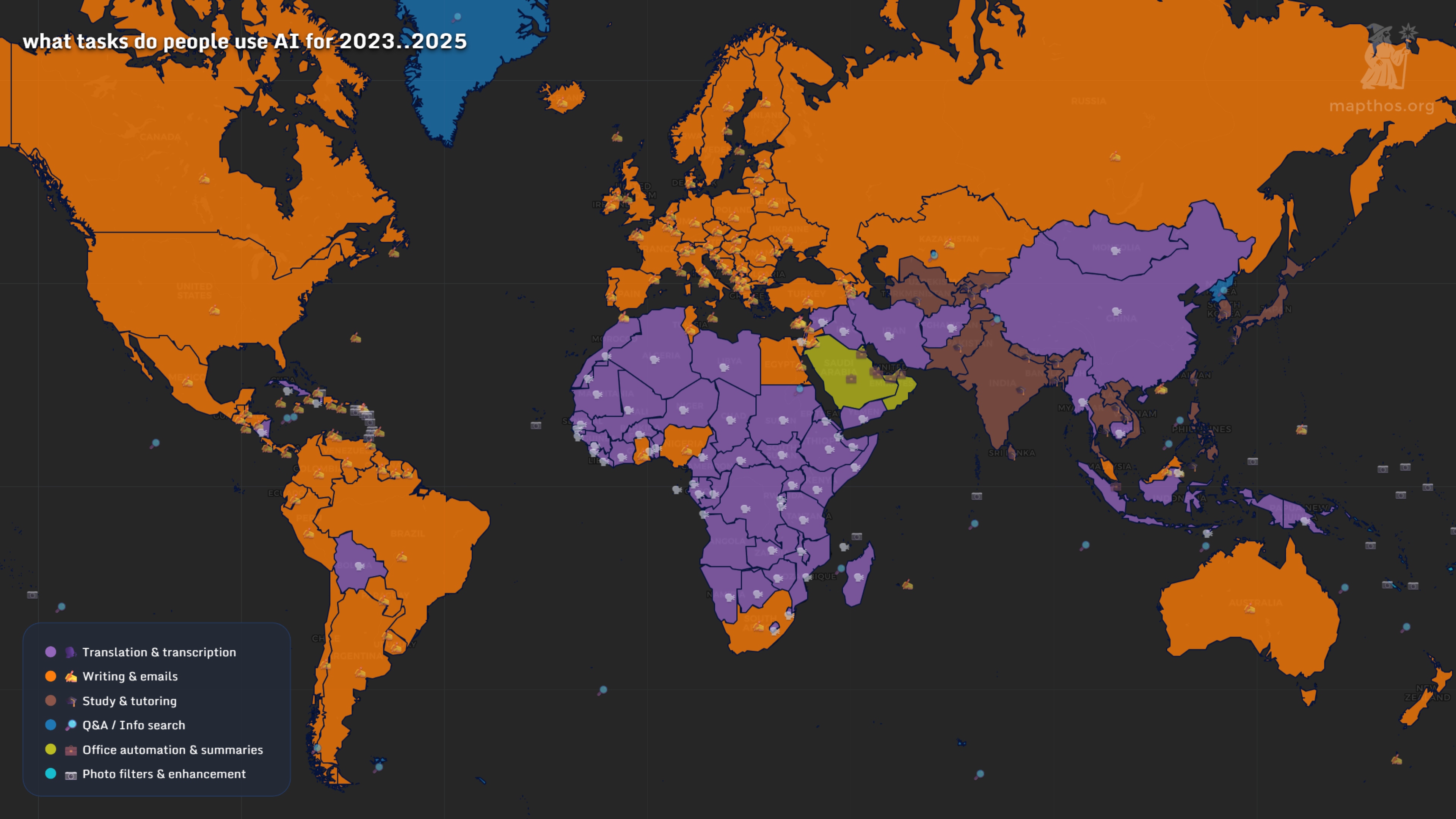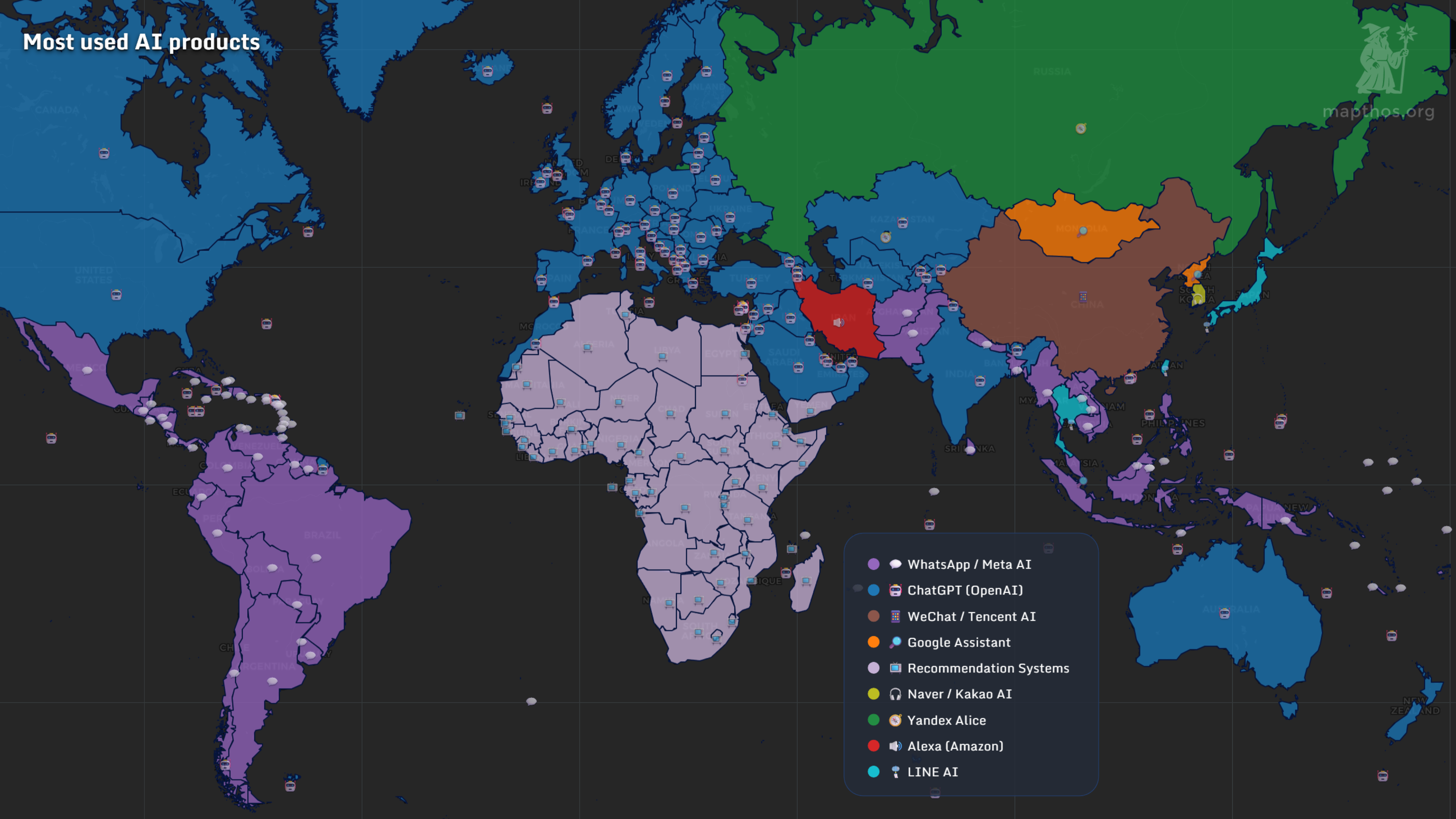🤖 Mapping the Global AI Divide in 2025

Artificial intelligence may be the first truly global technology — yet it’s far from equally distributed. In 2025, access to AI tools reflects politics, infrastructure, and cultural adoption as much as innovation itself. Through MAPTHOS global datasets, we mapped how AI spreads across nations: where it thrives, where it’s restricted, and how people actually use it.
🌐 Where AI Is (and Isn’t) Available

The global availability map paints a story of uneven progress:
- Full access (blue) spans much of the Americas, Europe, and Oceania — regions where ChatGPT, Gemini, and Copilot operate freely.
- Partial access (orange) covers nations in Africa and the Middle East, where infrastructure and regulation still limit usage.
- Government restrictions (red) define Iran and similar states, where AI products are blocked or sanctioned.
- Local ecosystems (green) — most notably China — run on domestic models like Baidu Ernie and SenseTime, creating an entirely separate AI internet.
💬 What People Use AI For

When access meets culture, patterns emerge. Across North America and Europe, AI is primarily used for writing, emails, and creative tasks — the everyday extensions of digital work. In contrast, Africa and South Asia lean heavily on AI for translation, transcription, and study support, using it as a tool of linguistic and educational empowerment. Meanwhile, China’s ecosystem focuses on office automation, merging AI with business systems at scale.
In 2025, AI isn’t one behavior — it’s a mirror of human priorities.
🧠 Which AI Products Lead the World

From social assistants to coding copilots, the most used AI products form a digital atlas of influence:
- Meta AI (WhatsApp) dominates Latin America, Africa, and the Middle East.
- ChatGPT leads in North America, Europe, and Australia.
- WeChat AI defines East Asia’s online experience, while Naver and Kakao rule South Korea.
- Yandex Alice remains strong in Russia’s linguistic sphere.
📊 The Global Share of AI Users

Our final dataset measures the share of population actively using AI tools. In the U.S., Canada, and Northern Europe, usage exceeds 80–90%, making AI nearly universal in daily life. In contrast, Africa and South America show rapid growth from lower baselines — a wave of new adopters entering the digital economy through mobile-first tools. Even where connectivity lags, curiosity doesn’t.
🌎 The Emerging AI Geography
Together, these maps reveal a world reshaped by invisible algorithms. Access defines opportunity, usage defines culture, and products define digital identity. Artificial intelligence is no longer just a technology — it’s becoming a layer of global geography, drawn not by borders but by bandwidth, regulation, and imagination.
👉 Explore more at app.mapthos.org
See the world. Map better. Dream big. 🌍✨